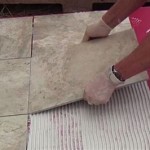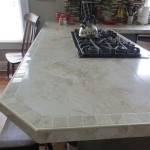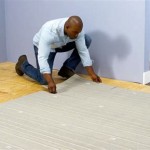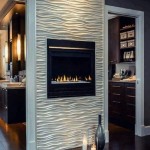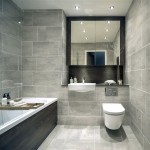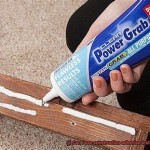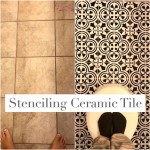Make A Splash With Pool Tiles In Korea
The aesthetics and functionality of swimming pools are paramount, especially in a country like Korea where design and quality are highly valued. Pool tiles play a crucial role in achieving the desired look and performance. The right choice of pool tiles enhances visual appeal, ensures durability, provides hygiene, and contributes to overall safety. This article explores the considerations, options, and impact of pool tiles in the Korean market.
Pool tiles are not simply decorative elements; they are integral to the pool’s structure and longevity. They protect the underlying concrete or gunite from water damage, chemical erosion, and the stresses of freeze-thaw cycles prevalent in Korean winters. Selecting the appropriate tiles requires a comprehensive understanding of material properties, installation techniques, and the long-term environmental factors that will affect the pool's integrity.
Furthermore, Korean design sensibilities often lean towards minimalist elegance and natural elements. This preference extends to pool design, where tiles are increasingly used to create seamless transitions between indoor and outdoor spaces and to mimic natural water features. The use of subdued colors, textures that emulate natural stone, and innovative lighting designs are frequently seen in high-end residential and commercial pool projects across Korea.
Key Considerations When Choosing Pool Tiles in Korea
Several factors must be carefully considered when selecting pool tiles for Korean projects. These considerations encompass the practical aspects of durability and safety, as well as the aesthetic elements that contribute to the overall design vision. Neglecting any of these factors can result in costly repairs, safety hazards, or a visually unappealing final product.
Firstly, durability is critical. Korean weather patterns present a range of challenges, from scorching summers to freezing winters. Pool tiles must be resistant to cracking, fading, and chemical degradation. Porcelain and glass tiles are particularly popular choices due to their inherent resistance to these elements. The quality of the grout is also crucial; it must be waterproof and resistant to mold and mildew growth, which are common concerns in humid environments.
Secondly, safety is paramount. Pool tiles must provide adequate slip resistance, especially in areas around the pool deck and steps. Textured tiles or tiles with a special anti-slip coating are recommended to minimize the risk of accidents. The chosen tiles should also be non-toxic and free of harmful substances that could leach into the water, compromising its purity and potentially harming swimmers.
Thirdly, aesthetics should align with the overall design concept. Pool tiles come in a vast array of colors, shapes, sizes, and patterns. Selecting tiles that complement the surrounding landscape and architecture is vital to creating a cohesive and visually appealing space. In Korea, many pool designs incorporate elements of traditional Korean architecture, such as natural stone accents or minimalist designs that emphasize clean lines and open spaces. The choice of pool tiles should harmonize with these elements to create a sense of balance and tranquility.
Types of Pool Tiles Popular in Korea
The Korean pool market offers a wide variety of tile options, each with its own unique characteristics and advantages. Understanding the different types of tiles available is essential for making an informed decision that meets both the functional and aesthetic requirements of the project.
Porcelain tiles are a highly popular choice due to their durability, water resistance, and versatility. They are manufactured using a high-temperature firing process, which results in a dense, non-porous material that is highly resistant to cracking, fading, and staining. Porcelain tiles are available in a wide range of colors, patterns, and sizes, making them suitable for various design styles. They are also relatively easy to maintain and clean, making them a practical choice for both residential and commercial pools.
Glass tiles offer a luxurious and visually appealing option. They are known for their vibrant colors, shimmering appearance, and ability to reflect light, creating a stunning effect in the water. Glass tiles are also non-porous and resistant to chemical damage, making them suitable for pool environments. However, they can be more expensive than porcelain tiles and may require professional installation to ensure a seamless and watertight finish. The refraction qualities of glass tiles can enhance the visual depth of the pool, especially when combined with strategic lighting.
Natural stone tiles, such as granite, slate, and travertine, offer a natural and earthy aesthetic. They are durable and resistant to wear and tear but require more maintenance than porcelain or glass tiles. Natural stone tiles are porous and may need to be sealed regularly to prevent water absorption and staining. However, their unique texture and natural variations in color can add a touch of elegance and sophistication to any pool design. Sourcing natural stone locally can also align with the growing emphasis on sustainability in Korean construction projects.
Mosaic tiles, typically made of small pieces of glass, ceramic, or stone, provide a high level of design flexibility. They can be used to create intricate patterns, murals, and custom designs, allowing for a truly unique and personalized pool experience. Mosaic tiles are often used in conjunction with other tile types to add accents, borders, or focal points to the pool. Their relatively small size makes them ideal for curved surfaces and complex geometries.
Installation and Maintenance of Pool Tiles in Korea
Proper installation and ongoing maintenance are crucial for ensuring the longevity and performance of pool tiles. Even the highest quality tiles can fail prematurely if they are not installed correctly or if they are not properly maintained.
The installation process begins with surface preparation. The underlying substrate must be clean, level, and free of any cracks or imperfections. A waterproof membrane is typically applied to the substrate to prevent water from seeping through and damaging the structure. The tiles are then carefully applied using a high-quality adhesive that is specifically designed for underwater applications. Grouting is then applied to fill the joints between the tiles, creating a watertight seal. The grout must be properly cured to ensure its strength and durability.
Professional installation is highly recommended to ensure that the tiles are properly aligned, spaced, and bonded to the substrate. Experienced installers have the knowledge and skills to handle the complexities of pool tile installation, including dealing with curved surfaces, corners, and other challenging areas. They also understand the importance of using the right materials and techniques to prevent common problems such as tile delamination, cracking, and leaks.
Regular maintenance is essential for keeping pool tiles in good condition. This includes brushing the tiles regularly to remove dirt and debris, testing and balancing the pool water chemistry to prevent chemical damage, and inspecting the tiles and grout for any signs of damage. Any cracks or chips should be repaired promptly to prevent further deterioration. Periodic cleaning with a mild detergent and a soft brush can help to remove stains and algae growth. Acid washing should only be performed by trained professionals as improper use can damage the tiles and grout.
In Korea, the seasonal variations in temperature and humidity can place additional stress on pool tiles. During the winter months, it is important to protect the tiles from freeze-thaw damage by draining the pool or covering it with a winter cover. During the summer months, it is important to maintain proper water chemistry to prevent algae growth and staining. By following these simple maintenance tips, pool owners can ensure that their pool tiles remain beautiful and functional for many years to come. Moreover, considering localized solutions from Korean tile manufacturers and suppliers can streamline maintenance and repair processes, ensuring readily available replacements and expert advice tailored to the specific environmental conditions.

Aquafield Jimjilbang Spa Sauna Hanam Goyang Anseong Korea

Top 10 Pool Tile Trends You Can Visualize Before
20 Pool Tile Ideas To Help Create Your Dream Space
20 Pool Tile Ideas To Help Create Your Dream Space

Things To Do In Pyeongtaek Courtyard By Marriott

Water Kingdom Pa Park Habio 2025 All You Need To Know Before Go With Reviews

Home Gym Workout Room Equipment
The American Korean Bathhouse A Review Into Gloss

Inspire Entertainment Resort Incheon Updated 2025 Reviews Hotels Com

L7 Hongdae By Lotte Seoul Latest 2025 Reviews Hotels Com
Related Posts

